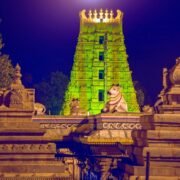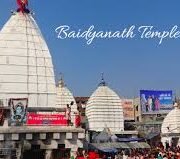Nestled on the banks of the Shipra River in the ancient city of Ujjain, the Bhartrihari Caves are a testament to the rich tapestry of history, spirituality, and legend that characterizes this region. These caves, named after the revered sage and poet Bhartrihari, offer a fascinating glimpse into India’s spiritual heritage and the intriguing stories that have shaped it.
A Glimpse into Ujjain’s Past
Ujjain, one of the seven sacred cities (Sapta Puri) of Hinduism, has long been a hub of cultural, religious, and academic pursuits. Its history stretches back over two millennia, marked by its prominence as a major trade center and a seat of learning. The city is intimately connected with numerous historical and mythological narratives, making it a focal point for pilgrims and history enthusiasts alike.
The Legend of Bhartrihari
The Bhartrihari Caves are named after Bhartrihari, a legendary figure known for his wisdom and poetic prowess. Bhartrihari is believed to have been the elder brother of King Vikramaditya, a celebrated ruler of Ujjain who is often associated with prosperity and wisdom.
According to legend, Bhartrihari renounced his worldly life and took up asceticism after a personal crisis. Distraught by the realization of life’s transience and the futility of earthly attachments, he sought solace and enlightenment in these caves. It is here that he is said to have composed his profound works, including the “Vairagya Shataka” (a century of verses on renunciation), which reflect his philosophical musings and spiritual insights.
Architectural and Archaeological Significance
The Bhartrihari Caves are not just a site of spiritual importance but also an archaeological marvel. Carved into sandstone, the caves date back to the 1st century BC and exhibit the characteristic simplicity of early monastic architecture. The interiors of the caves are stark and unadorned, highlighting their use as a place for meditation and ascetic practices.
The caves consist of several chambers, each serving different purposes, including living quarters, meditation halls, and spaces for scholarly discourse. The absence of ornate decorations underscores the ascetic lifestyle that Bhartrihari and his followers espoused.
Spiritual Resonance
Visiting the Bhartrihari Caves is akin to stepping back in time. The serene and austere environment of the caves invites introspection and contemplation, allowing visitors to connect with the profound spiritual legacy of Bhartrihari. The tranquility of the location, away from the bustle of modern life, provides an ideal setting for meditation and self-reflection.
Accessibility and Visitor Information
Located about 3 kilometers from the Mahakaleshwar Temple, another significant religious site in Ujjain, the Bhartrihari Caves are easily accessible by road. Ujjain itself is well-connected by rail and road networks, making it convenient for travelers from various parts of India.
The best time to visit the caves is during the cooler months, from October to March, when the weather is pleasant. Visitors are advised to wear comfortable footwear and carry water, as the path to the caves involves a short trek.
Conclusion
The Bhartrihari Caves in Ujjain are more than just a historical site; they are a symbol of India’s enduring spiritual heritage. The caves stand as a silent witness to the introspective journey of a great sage whose teachings continue to inspire generations. For those seeking a deeper understanding of India’s cultural and spiritual ethos, a visit to these ancient caves is an enriching experience that transcends the boundaries of time and space.






